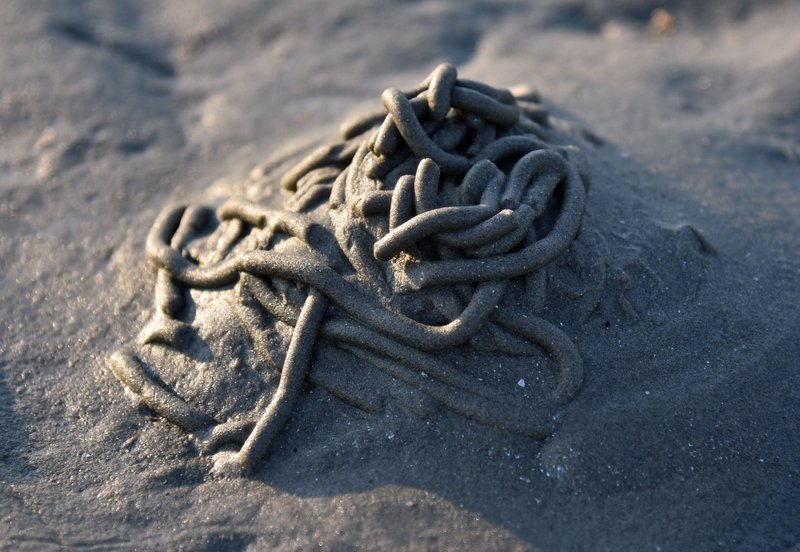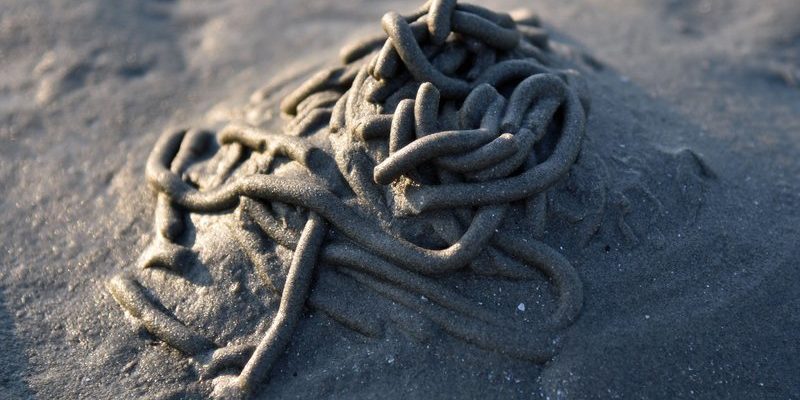
Mudworms, often found in estuaries and marshy coastal areas, belong to the family *Oligochaeta*. While they might seem insignificant at first glance, their impact on the ecosystem can be profound—both positively and negatively. So, let’s dive deeper and explore the ecological benefits and drawbacks of mudworm populations.
What Are Mudworms?
Mudworms are a type of segmented worm known for their ability to thrive in soft, muddy environments. They belong to diverse orders and families, with some of the most common ones found in areas like the East Coast of the United States. These worms can range in size but generally stay relatively small, making them hard to spot without a keen eye.
You might be wondering why these creatures matter. For one, they play a significant role in the food web. Both marine and terrestrial animals, from fish to birds, rely on mudworms as a food source. Additionally, their burrowing habits help aerate the soil and sediment, which can improve overall water quality.
Benefits of Mudworm Populations
Mudworms offer several ecological benefits that can significantly impact their environments. Here are three key ways they help out:
- Soil Aeration: As they burrow, mudworms create small channels in the sediment. This aeration process allows air and water to flow more freely, promoting a healthier environment for plant roots and other organisms.
- Food Source: Numerous species, including fish, birds, and even some mammals, depend on mudworms as a critical food source. Their presence can help support a diverse array of wildlife.
- Nutrient Cycling: By breaking down organic matter, mudworms contribute to nutrient cycling in their ecosystems. They help decompose materials that enrich the soil and water, nourishing plant life and other organisms.
These benefits demonstrate how mudworms are more than just squiggly inhabitants of our marshes; they’re essential workers in the ecosystem.
The Role of Mudworms in Ecosystem Health
The health of an ecosystem often hinges on its diversity and the interactions between its inhabitants. Mudworms play a surprisingly pivotal role in maintaining this balance. Their presence can indicate overall ecosystem health, as they thrive in environments rich in organic matter. When mudworm populations flourish, it often suggests a stable ecosystem.
Conversely, a decline in their numbers could signal trouble. Pollutants, habitat destruction, or changes in water quality can negatively affect mudworm populations. In such cases, their absence can lead to a cascading effect on the food web, disrupting the delicate balance of the ecosystem.
You might find it interesting that scientists often monitor mudworm populations as an early warning system. If something is off in the environment, these little creatures can be the first to show it, helping us take action before more significant problems arise.
Drawbacks of Mudworm Populations
While mudworms can be beneficial, they aren’t without their drawbacks. Here are some key issues associated with their populations:
- Overpopulation: In some cases, excessive mudworm populations can lead to overfeeding on organic matter, which might eventually deplete local nutrients. An imbalance can result, where other species suffer from a lack of available resources.
- Habitat Alteration: When mudworms dig extensively, they can change the structure of sediment and soil in their environments. This alteration can negatively affect plant life and other organisms reliant on a stable habitat.
- Bioaccumulation: Mudworms can absorb pollutants from their environment. When predators consume them, these toxins can accumulate in the food chain, potentially affecting larger species, including humans.
Understanding these drawbacks is just as important as recognizing the benefits mudworms provide. Their role can be a double-edged sword, and balance is crucial in any ecosystem.
How Do Mudworm Populations Affect Biodiversity?
The presence or absence of mudworm populations can significantly influence biodiversity in their ecosystems. When mudworms are thriving, they support a wide array of species that depend on them for food or habitat. This creates a richer tapestry of life. Conversely, when their populations dwindle or become unbalanced, the impacts can ripple outward, affecting many other organisms.
A diverse ecosystem is more resilient to changes, whether those changes come from natural events or human activity. By supporting mudworm populations, we indirectly promote biodiversity and help maintain the intricate web of life that exists around them.
In addition, scientists often study mudworm populations to understand broader ecological patterns. Their adaptability makes them valuable indicators of environmental health, and examining their populations can provide insights into the conditions of their surroundings.
Conservation Efforts for Mudworms
Given the dual nature of mudworms’ influence on ecosystems, conservation efforts are essential. Strategies focus on protecting their habitats and monitoring populations. Here’s how we can help:
- Habitat Protection: Establishing protected areas can help preserve vital habitats for mudworms and other wildlife. These areas serve as safe havens, allowing populations to thrive without the pressure of habitat destruction.
- Pollution Prevention: Reducing pollution and runoff from agriculture and urban environments is crucial. Cleaner water supports healthier mudworm populations and, by extension, the ecosystems they support.
- Research and Monitoring: Ongoing research helps track mudworm populations and understand their ecological roles better. By monitoring their health, we can act proactively to address potential issues before they escalate.
Conservation isn’t just about saving one species; it’s about ensuring the health of entire ecosystems that rely on interconnected relationships.
Mudworms might not be the stars of the ecological show, but they play a vital supporting role. Their contributions to soil aeration, nutrient cycling, and as a food source are crucial for many habitats, while also highlighting the delicate balance of nature. But we must also recognize the challenges they present, from overpopulation to bioaccumulation of pollutants.
Understanding the ecological benefits and drawbacks of mudworm populations allows us to appreciate their complexity and importance. By focusing on conservation, we can help maintain not only their populations but also the health of the ecosystems they inhabit. The next time you think about mudworms, remember—their tiny tunnels make a world of difference.

